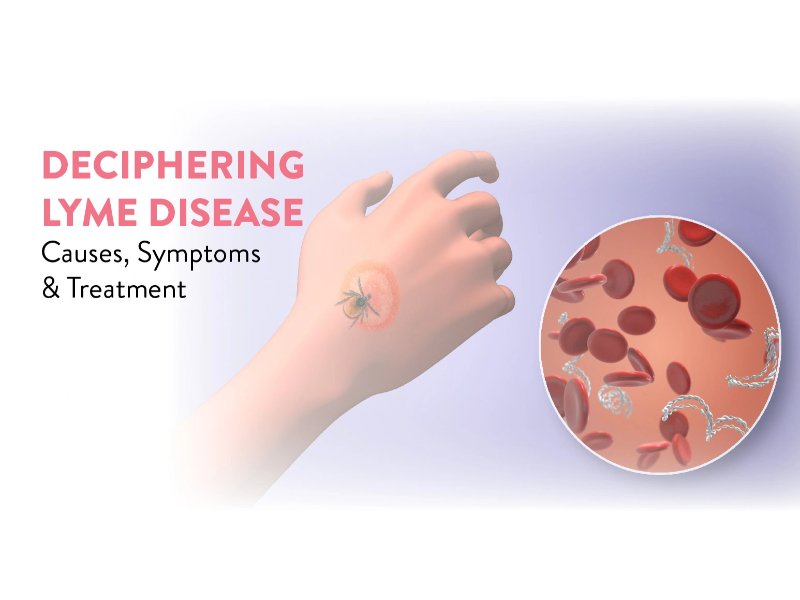Lyme disease is a bacterial infection transmitted to humans through the bite of infected black-legged ticks, commonly known as deer ticks. It is caused by the bacterium Borrelia burgdorferi and, less frequently, Borrelia mayonii. Lyme disease is the most common vector-borne disease in the United States and affects people in many parts of the world.
Causes and Transmission
Lyme disease is primarily spread through tick bites. Ticks become infected by feeding on animals, such as deer or rodents, that carry the Borrelia bacteria. Once infected, a tick can transmit the bacteria to humans during a bite. Most infections occur in wooded, grassy, or bushy areas where ticks thrive.
Ticks are most active in warmer months, typically from late spring to early fall. However, in some regions, they remain active year-round.
Symptoms of Lyme Disease
Lyme disease progresses through three stages: early localized, early disseminated, and late disseminated disease.
- Early Localized Stage (3-30 days after a bite):
- The hallmark symptom is a rash called erythema migrans (EM), often described as a “bull’s-eye” rash. This rash may expand over time.
- Other symptoms include fever, chills, fatigue, headache, muscle aches, and swollen lymph nodes.
- Early Disseminated Stage (weeks to months after a bite):
- Multiple EM rashes may appear on the body.
- Symptoms may include facial palsy (loss of muscle tone on one side of the face), severe headaches, neck stiffness, joint pain and swelling, and irregular heartbeats (Lyme carditis).
- Late Disseminated Stage (months to years after a bite):
- Persistent arthritis, particularly in large joints like the knees.
- Neurological symptoms, such as memory loss, difficulty concentrating, and nerve pain.
Diagnosis of Lyme Disease
Diagnosing Lyme disease involves a combination of clinical evaluation and laboratory tests:
- Clinical evaluation: Doctors assess symptoms, medical history, and possible exposure to ticks.
- Blood tests: Enzyme-linked immunosorbent assay (ELISA) and Western blot tests detect antibodies against Borrelia bacteria.
Treatment
Most cases of Lyme disease can be effectively treated with antibiotics, especially if diagnosed early. Common antibiotics include:
- Doxycycline: For adults and children over 8 years old.
- Amoxicillin or Cefuroxime: For pregnant women and younger children.
Late-stage Lyme disease may require longer or intravenous antibiotic treatments.
Prevention
Preventing Lyme disease involves reducing your exposure to tick bites:
- Avoid tick-prone areas: Stay on clear paths and avoid tall grass or dense brush.
- Wear protective clothing: Long sleeves, long pants, and hats can shield you from tick bites.
- Use tick repellents: Apply repellents containing DEET on skin or permethrin on clothing.
- Conduct tick checks: After outdoor activities, inspect your body and clothing for ticks.
- Remove ticks promptly: Use fine-tipped tweezers to grasp the tick as close to the skin’s surface as possible, then clean the bite area with antiseptic.
Complications of Untreated Lyme Disease
If left untreated, Lyme disease can lead to serious complications, such as:
- Chronic joint inflammation (Lyme arthritis).
- Neurological disorders, including meningitis, neuropathy, and memory impairment.
- Cardiac issues, like heart block or myocarditis.


